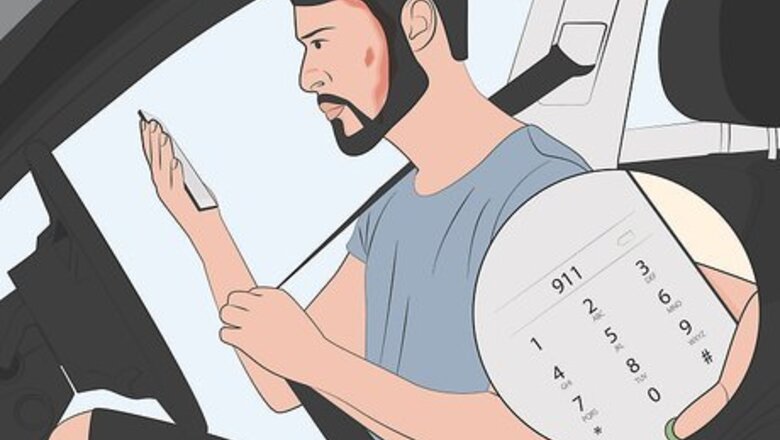
views
X
Trustworthy Source
MedlinePlus
Collection of medical information sourced from the US National Library of Medicine
Go to source
Car accidents and injuries to the head[2]
X
Trustworthy Source
Johns Hopkins Medicine
Official resource database of the world-leading Johns Hopkins Hospital
Go to source
or chest are common causes of internal bleeding.[3]
X
Research source
If you suspect you or someone you know is bleeding internally, it's important to call an ambulance right away and know what to do while you wait for help to arrive.
Calling for Emergency Care
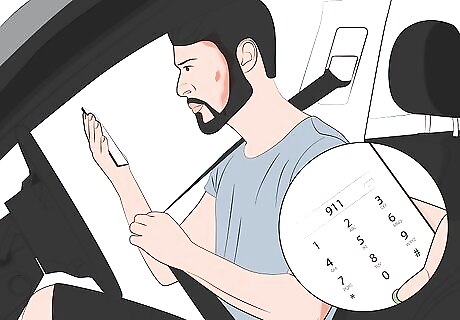
Call an ambulance right away or tell someone else to do so. If possible, call for emergency medical care immediately. If there’s another bystander around, tell (don’t ask) them to call for help. Let the operator know that you’re calling about internal bleeding because they might give you instructions about what to do while waiting for the ambulance. In the USA and Canada, call 911. If you’re in another country, familiarize yourself with the particular emergency numbers in your area. For instance: Australia: 000 (or 122 on cell phones) China: 999 (in large cities) or 120 Europe: 112 Japan and Korea: 119 Mexico: 066 (some areas direct 911)
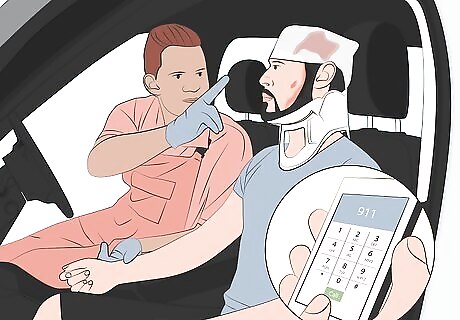
Call an ambulance even if you’re not sure it’s internal bleeding. Internal bleeding can be caused by trauma, broken bones, excessive alcohol use, pregnancy complications, or medications. If you’re not sure but suspect you or another person might be bleeding internally, err on the side of safety and call for emergency medical help. Signs of internal bleeding include: Black or tarry stool, which is often a sign of an upper GI bleed (stomach). Bright red blood per rectum (BRBPR), which is a typical sign of a lower GI (small or large colon) bleed. Bloody vomit, urine, and/or stool Abdominal cramps Visible bruising around your navel or the sides of your abdomen Extreme tiredness, weakness, dizziness, or faintness Shortness of breath and/or chest pain Pale skin
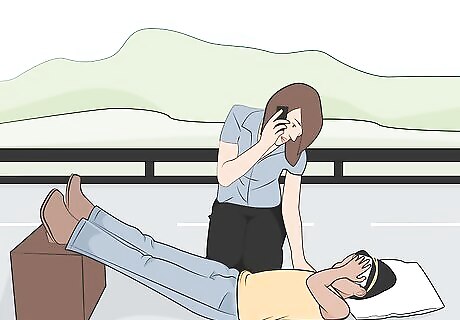
Lay down and prop your legs up or put the person in this position, if possible. If you’re bleeding internally, lay down with your legs elevated above the level of your heart. If another person is bleeding internally, position them in a similar manner if possible. Place a blanket or any protective fabric under the person if you're on a road, gravel, dirt, or any other terrain that may increase discomfort or injury. Make sure they’re protected from the elements, especially if you’re currently at the site of a natural disaster. For instance, if you’ve witnessed an accident and the road is covered in ice or scalding hot, place a coat down under the person. If you’re in a hurricane, tornado, or earthquake, use blankets and other materials to protect the person from debris and falling structures. In the instance of a hurricane, make sure the person is in an area safe from flooding.
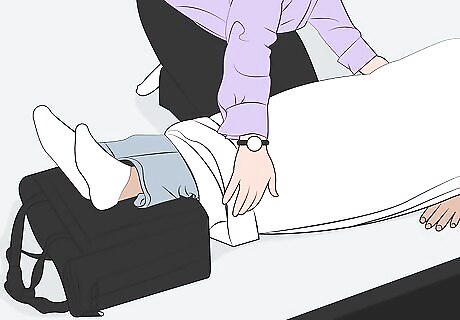
Cover up with a blanket to maintain body heat. Blood is responsible for thermoregulation (keeping your body at a healthy temperature). Internal bleeding disrupts this balance, causing body temperature to go down. This is important to prevent you or the injured person from getting hypothermia or hypovolemic shock. Replace any wet or damp clothing with dry clothing or blankets, if possible.
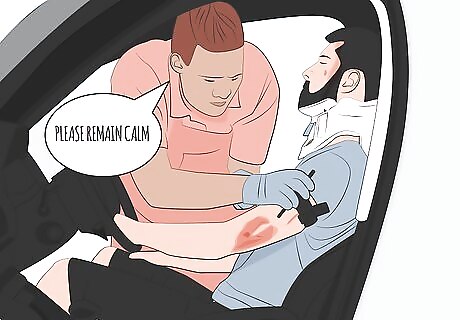
Don’t panic and keep the injured person as calm as possible. If you have internal bleeding, don’t panic and remember to breathe. If you’re taking care of someone else, talk to the person to keep them conscious while you wait for the medics. If applicable, use a calm tone to explain to them what happened and let them know that they need to stay still and that you’ll be there until help arrives. For example, you might say: “You were in a car accident and medics are on their way. You’re injured so try to stay as still as you can for now. I’ll be here with you until help arrives.” To prevent shock, provide lots of comfort and reassurance. For instance, you might hold their hand, and tell them how strong they are and that they’re going to be okay. If you tend to panic in emergency situations, remember to breathe. Losing your cool won’t help anyone.
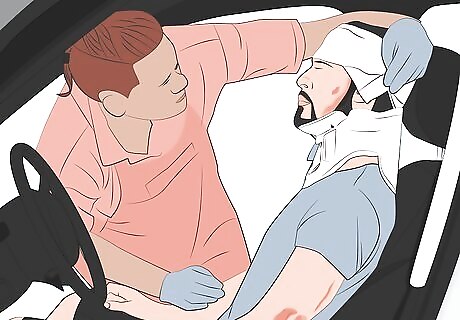
Stay still if you’re bleeding internally or manage the other person’s minor injuries. If you are bleeding internally, don’t worry about any minor injuries—just stay calm and wait for help to arrive. If you’re taking care of someone else, tend to any minor cuts, scrapes, or burns as best you can. Just make sure it doesn’t involve moving them around in a way that could exacerbate the internal bleeding. For example, if they have a shallow cut on their arm, clean and wrap the wound to stop the bleeding. But if they have a minor scrape on their back and they’re lying face up, don’t try to move them in order to treat it—it’s not a priority. If you’re not sure how to treat minor wounds, find someone who can. If you’re in a situation where you don’t have access to cleaning solutions or bandages, flush the wound with clean water and apply pressure with a clean cloth to stop the bleeding. However, don’t apply pressure if the site of the wound is near the area of internal bleeding.
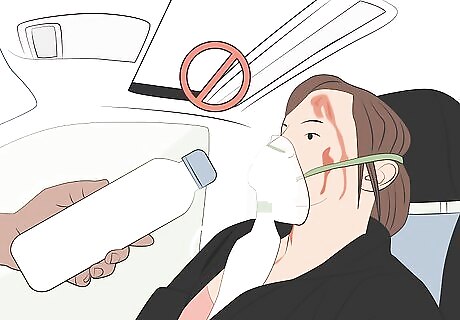
Don't eat, drink, or smoke anything or offer food and drink to the injured person. While water may seem like a nurturing thing to offer someone who is hurt, avoid doing this. And don’t drink any water or eat anything if you’re the one with internal bleeding. If the bleeding is in the gastrointestinal tract, water will dilute blood and do more harm than help. The injured person will probably express thirst, but calmly explain to them that they’ll get to drink water after they’re treated for their wounds.
Getting Surgery for Internal Bleeding
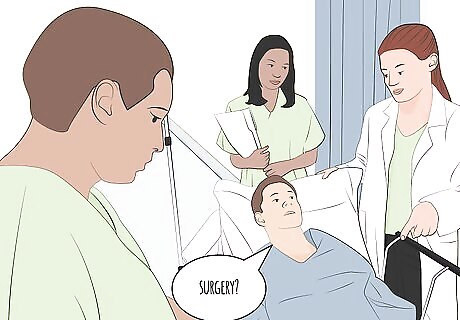
Expect to have surgery for internal bleeding. Whether the bleeding is occurring near your skin or deep inside your body, surgery is necessary to stop the bleeding. For shallow internal bleeding like on a vein, doctors will apply pressure on the internal wound once they’ve made an incision. Bleeding veins are less life-threatening and easier to treat than other types of internal bleeding.
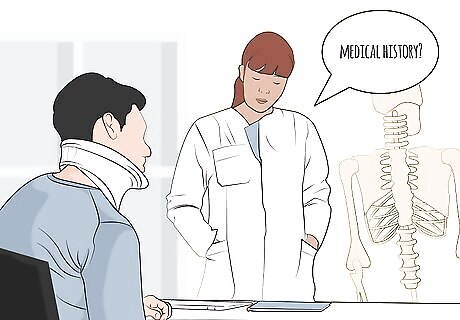
Talk to your doctor about your medical history in non-emergency situations. In a true emergency situation, the doctor will need to go ahead with the surgery to stop the bleeding right away. That means you or a loved one won’t get a chance to discuss your options—stopping the bleeding as soon as possible is the main priority. If you are able to talk to your doctor prior to your surgery, discuss your medical history and any known allergies you might have. Discussing your allergies will help the doctor decide what medications to administer and what type of medical “glue” to use to stop the internal bleeding.
Prepare for your surgery if it’s not an emergency situation. Tell your doctor about any prescribed or over-the-counter medications you take, especially blood thinners, aspirin, and herbal supplements. It’s also important to mention other medical conditions, allergies, drug and alcohol use, and any recent illnesses. Avoid eating or drinking anything for 6 to 12 hours before your surgery.Image:Treat Internal Bleeding Step 10 Version 2.jpg|center]] Your doctor may tell you that you can take certain medications with a sip of water the morning of your surgery.
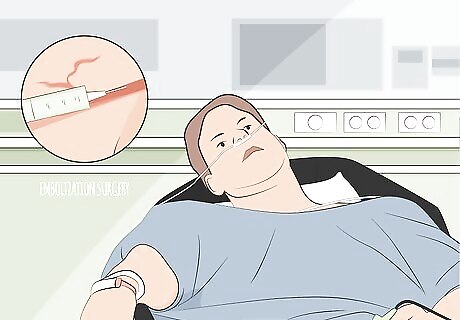
Receive embolization surgery from an interventional radiologist for deeper bleeding. Embolization, also referred to as “Minimally Invasive Image-guided Procedure” (MIIP), involves inserting a small tube into your body, typically through the arm or groin (whichever is closest to internal bleeding). The interventional radiologist will use a dye to figure out which artery is bleeding and then inject material through the tube to stop it up (much like you would clog a leaky pipe). Don’t worry about pain, the doctor will numb your skin prior to cutting so you don’t feel anything. You’ll likely receive pain medication as well. The material the doctor will inject might be gelatin slurry, medical grade superglue, thin curled wires, or tiny plastic particles. These things might sound weird to have inside of your body, but don’t worry—they’re all tested and safe.
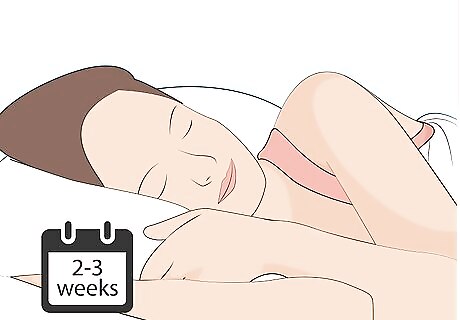
Rest after having surgery for internal bleeding. It will take 2 to 3 weeks to fully recover from the surgery. While it’s uncommon, some people experience “post-embolization syndrome,” which feels like a mild fever and acute pain. If you experience this, call your doctor about what medications you can take to ease these symptoms. Post-embolization syndrome typically goes away after a few days.
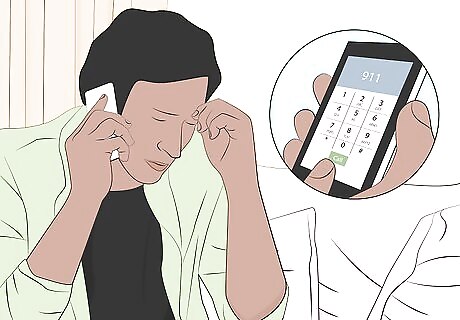
Call an ambulance if you experience any major complications. It’s normal to experience tenderness at the incision site, but some conditions warrant immediate medical care. Call an ambulance if you experience any of the following symptoms immediately after or up to a week or two after your surgery: Intense fever and/or chills Worsening bruising or swelling at the incision site Severe pain Chest pain and/or difficulty breathing




















Comments
0 comment